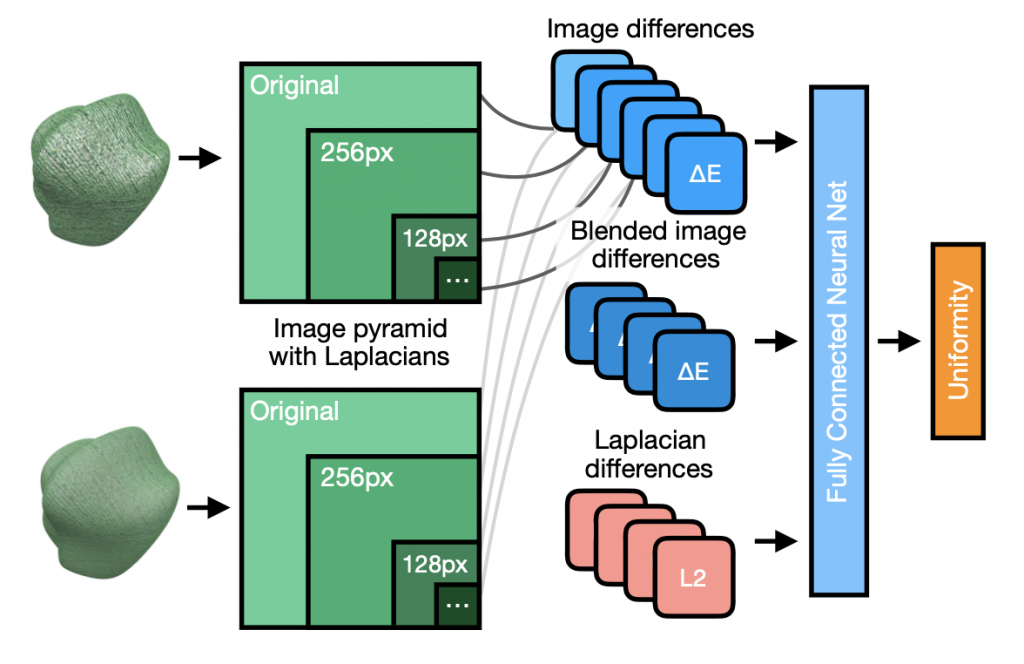
Michael Ludwig, Gary Meyer, Ingeborg Tastl, Nathan Moroney, Melanie Gottwals. An Appearance Uniformity Metric for 3D Printing. In Proceedings of the 15th ACM Symposium on Applied Perception (SAP ’18). Vancouver, (August 2018), 1-8. DOI: 10.1145/3225153.3225169
Abstract
A method is presented for perceptually characterizing appearance non-uniformities that result from 3D printing. In contrast to physical measurements, the model is designed to take into account the human visual system and variations in observer conditions such as lighting, point of view, and shape. Additionally, it is capable of handling spatial reflectance variations over a material’s surface. Motivated by Schrödinger’s line element approach to studying color differences, an image-based psychophysical experiment that explores paths between materials in appearance space is conducted. The line element concept is extended from color to spatially-varying appearances-including color, roughness and gloss-which enables the measurement of fine differences between appearances along a path. We define two path functions, one interpolating reflectance parameters and the other interpolating the final imagery. An image-based uniformity model is developed, applying a trained neural network to color differences calculated from rendered images of the printed non-uniformities. The final model is shown to perform better than commonly used image comparison algorithms, including spatial pattern classes that were not used in training.